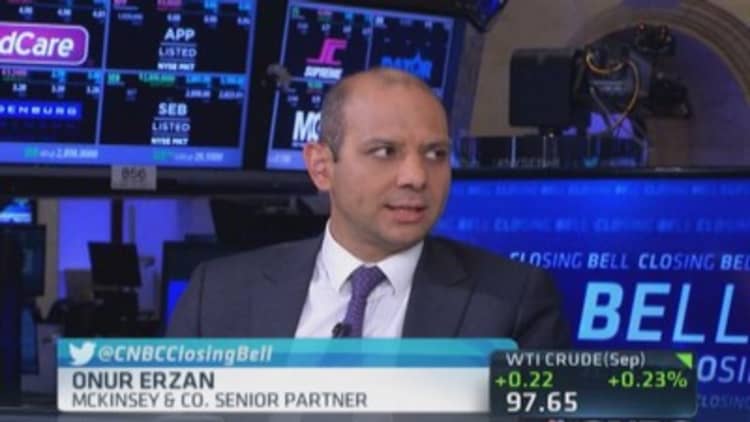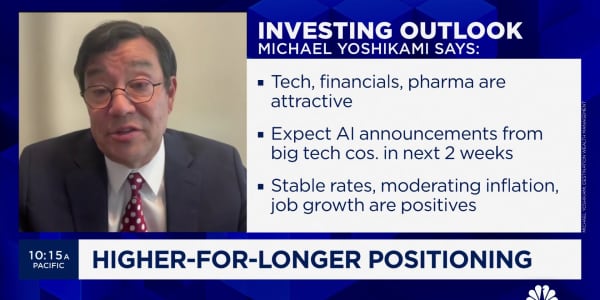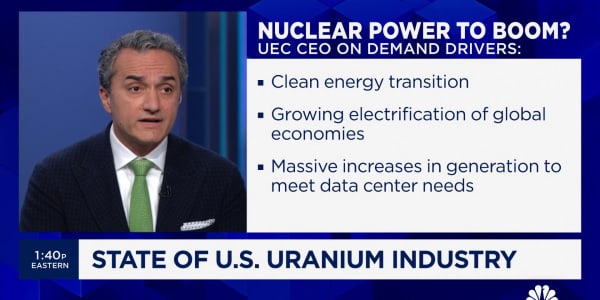Investors looking to follow the strategies of hedge fund heavyweights were the big winners when a major pension plan announced last week that it was cutting a $4 billion slate of high-cost managers, according to industry experts.
The California Public Employees' Retirement System is the largest public pension manager in the U.S., so its move carried wide ramifications.
"CalPERS was a dream come true," Adam Patti, founder and CEO of hedge fund replication company IndexIQ, said on the sidelines of the Morningstar ETF Conference in Chicago, which concluded Sept. 19. "They are the leader, and when they do something, others will follow."
CalPERS didn't say how the hedge fund cash would be reallocated, but the move was still seen as a victory for critics of hedge funds' relatively high fees and low transparency and liquidity.
"This is the story we've been telling for years: that you can get the benefit of being hedged, the diversification ... without paying the two and 20 (fees), without dealing with the tax inefficiencies, without dealing with the complexity of hedge funds," added Patti.
"Two and 20" refers to the standard hedge fund fee structure of 2 percent of assets and 20 percent of profits. That's much higher than so-called liquid alternatives, which usually charge between 1 percent and 3 percent of assets invested. The latter follow the strategies of high-profile hedge funders at a much lower cost than investing in the funds themselves.
The question now is if there will be an influx of institutional dollars. The big money has been slow to end their love affair with high-cost hedge funds, whose assets still dwarf that of public vehicles replicating their strategies. But industry observers say they see growing interest from pensions, endowments, foundations and others.
Read MoreExit from hedge funds not about performance: CalPERS CIO
Individual investors have already shown big interest in these "hedged" mutual funds. A wave of new products has made liquid alternatives the fastest-growing segment of the retail money management industry. Liquid alternatives have grown by 16 percent annually since 2005 and now stand at almost $900 billion, according to a recent McKinsey report.
In theory, they provide better protection against market downturns compared with traditional funds that only bet on rising stocks, for example. These "alternative" investments can also add diversification to a portfolio by taking advantage of strategies beyond just equities and bonds like commodities, shorting stocks, or playing mergers between companies.
Individual investors can buy into this strategy in a number of ways.
Some liquid alternatives use a portfolio of low-cost exchange-traded funds to replicate hedge funds, like the IQ Alpha Hedge Strategy Fund. Others, like the Direxion iBillionaire Index exchange-traded fund, parrot the stock holdings of major hedge fund managers like Dan Loeb and David Tepper, using their public disclosures about the companies where they are putting their money. ETFs usually track indexes and are traded like stocks but customarily have significantly lower fees than hedge and mutual funds.
Investors also can choose actual hedge fund managers in a fund of funds model, such as Goldman Sachs' GS Multi-Manager Alternatives Fund. Some established hedge fund managers, like Avenue Capital or Gotham Capital, also have launched retail versions of their strategies.
Despite the growth, large investors haven't yet made a big move from private to public funds.
"That adoption has been slow so far, but that could increase over the next three to five years," said Robert Worthington, president of $3 billion Hatteras Funds. "Part of that is are they going to be convinced that you can achieve a suitable risk return objective in that liquid format."
He said Hatteras, which manages mutual fund-style hedge funds and a traditional fund of funds, has received calls from some of the top money management consulting firms over the last 12 months about the strategy.
Even if institutions don't switch, the rise of liquid alternatives may pressure traditional hedge funds to be more investor-friendly.
"What it's done for the industry," Worthington said, "is it's starting to bring down fees ... it's providing a much higher model of transparency ... and of course you have liquidity. That's a good thing."
Avery Kiser, a vice president at Neuberger Berman's alternative investment management unit, said smaller institutions are the most likely candidates to switch given their relatively limited access to hedge funds. Liquid alternatives are especially good for replacing hedge fund strategies that focus on liquid markets, such as those that bet on the appreciation of large company stocks.
"It's really a question in the institutional world of how much should I pay and for what," Kiser said Monday at the Alpha Hedge West conference in San Francisco. "Any place where you can use (liquid alternatives) I think they are certainly taking a pretty long, hard look at it."
Read MorePensions stick with hedge funds despite CalPERS exodus
Morningstar data appears to back up the claims of increased interest from institutions. As of Aug. 31, institutions had $96.08 billion in alternative open-ended U.S. mutual funds; retail investors had $65.6 billion. Institutional net flows hit a record high in 2013 of $22.2 billion and are already at $18.1 billion as of Aug. 31. Despite that fast growth, that's still far less than the hedge fund industry, which managed $2.86 trillion globally as of July 1, according to new data from HedgeFund Intelligence.

Doug Fincher, a portfolio manager at Ionic Capital, said fixed income-focused liquid alternatives are ideal for pension plans and others that are investing to guarantee current and future obligations. Usually such plans would increase their bond allocations to dial back risk, Fincher said, but with interest rates about to rise, that can actually add danger.
"If you can implement a liquid strategy that's built around quasi-fixed income returns ... it's a slam dunk," Fincher said at the Alpha Hedge event. "We're seeing that all the time."
Ionic is a $2.3 billion multistrategy hedge fund firm that is one of several managers to invest money for alternative mutual fund Aurora Horizons.
Read More
Others expressed caution amid the excitement.
Ed Rzeszowski, a senior portfolio manager at BlackRock who focuses on picking hedge fund managers for private and public funds of funds, said it was important to weed out inexperience. Some mutual fund managers, for example, don't have a history of shorting but are launching long-short hedge fund strategies nonetheless. And some hedge fund managers aren't really offering the same strategy in a new mutual fund because of rules around leverage and shorting.
"There are some significant differences between these liquid alts and traditional hedge fund products," Rzeszowski said at the San Francisco conference. In August, the firm launched BlackRock Multi-Manager Alternative Strategies, a mutual fund that has money with hedge fund firms like LibreMax Capital and PEAK6 Advisors.
The decision to switch will ultimately come down to performance. Many liquid alternatives were launched after the financial crisis and, according to some, haven't been fully tested by a down market.
The average alternative mutual fund is up 1.9 percent this year through August, according to Morningstar. The strategy averaged returns of 7.09 percent in 2013. By comparison, the HedgeFund Intelligence Global Composite Index is up 3.64 percent. It gained 9.21 percent last year.






